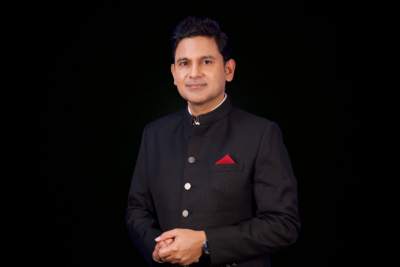ARTICLE AD BOX

Lyricist Manoj Muntashir discusses the creation of "Tumse Behtar" from "Sunny Sanskari Ki Tulsi Kumari." Inspired by a request for the "most dedicated song of the year," Muntashir collaborated with Tanishk Bagchi and Arijit Singh, highlighting their seamless creative process and the song's emotional resonance.
Lyricist Manoj Muntashir, known for his soulful and meaningful songwriting, recently shared insights into the making of Tumse Behtar — the heartfelt song from the film Sunny Sanskari Ki Tulsi Kumari. From the spark of inspiration to the collaboration with composer Tanishk Bagchi and singer Arijit Singh, Muntashir reveals how the song came to life, balancing poetic depth with emotional simplicity.
Excerpts... What was the inspiration behind “Tumse Behtar”?It all began with a call from my dear friend — and the creative mind behind some of the most celebrated songs of this decade — Azeem Dayani. He said, “Sir, I have a great tune by Tanishk Bagchi. I need you to write a song on it that becomes the most dedicated song of the year.” That one phrase — “The Most Dedicated Song” — did the trick for me. At what point in the film’s narrative did you envision this song being placed?Shashank Khaitan, the director of Sunny Sanskari, is known for having great music in all his films.
I wasn’t entirely sure where this song would be placed in the narrative, but I knew one thing for certain — Shashank would never let a good song go to waste. He gave it the justice it truly deserved. Which line or stanza was the hardest to write?I wouldn’t say it was hard to write, but it was certainly a challenge to end the song on a high poetic note while maintaining the simplicity of the film’s narrative. The last stanza took its own sweet time — but when it finally came together, it was deeply rewarding.
“Dekho na ye kamaal hua hai, kaisa dil ka haal hua hai, dil mera tere itar me dooba jaise koi rumal hua hai. Aesi deewangi pahle nahin thee, haal ye pichhle saal hua hai”Did you collaborate closely with music composer Tanishk Bagchi when writing, or did you write independently and send it over?Tanishk and I share a history of creating songs that have been both widely loved and deeply satisfying to the soul. We’ve collaborated on some memorable hits like ‘Lut Gaye’, ‘Tera Hua’, ‘Tiranga’, ‘Mere Rashke Qamar’, ‘Maaye’, and many more. Our process is simple. More often than not, Tanishk composes the melody first.
I’ve always had a personal bias towards his tunes — they’re unpretentious, beautifully simple, and offer just the right amount of space for words to breathe and make their presence felt.
Tumse Behtar was no different. Every single note — even with the dummy lyrics — was soul-stirring. When Tanishk, Azeem, and I sat down together in Tanishk’s music room, it took us barely thirty minutes to complete the song — from the first word to the last. How did Arijit Singh’s vocal tone influence any last-minute changes or adaptations in the lyrics?Even after thirteen years of Aashiqui 2, Arijit Singh remains the gold standard of Bollywood singing. I also share a long list of superhit songs with him — from ‘Phir Bhi Tumko Chahunga’ to ‘Ishq Mubarak’, ‘Dekha Hazaron Dafa’, ‘Phir Kabhi’, ‘Tumhein Kitna Pyar Karte’, ‘Desh Mere’, and many more — our collaborations are hard to count. When we create music, the melody and the words themselves whisper the name of the voice meant for the song. The moment we finished writing Tumse Behtar, we knew in our bones — it had to be Arijit. He didn’t just sing the song; he elevated it. The kind of steep rise Tumse Behtar is showing on and other streaming platforms simply wouldn’t have been possible without him. How does “Tumse Behtar” reflect the relationship dynamics between Sunny and Tulsi in the movie?Not just Sunny and Tulsi, but Vikram and Ananya as well — Tumse Behtar beautifully captures the layered dynamics of the unusual situations both couples find themselves in. There are moments of love, rejection, heartbreak, and love again — yet one emotion remains constant throughout: the belief that no one is better for me than you. “Tumse behtar, tumse pyara, yaara koi nahin —Aasmaan pe tumse roshan taara koi nahin.”How did the film’s director influence or guide the lyric writing for this song?As I mentioned earlier, Shashank is a true music buff — one of the few filmmakers of his generation who genuinely believes in the power of music. When you’re writing for him, there’s always a silent assurance that your work will shine on the screen.
You know your song will not only be loved by the director but will also be elevated by his craft. Sunny Sanskari was no exception. Shashank ensured the song received its complete due.
In the second half of the film, when the narrative gains momentum, it’s never easy to introduce a slow-burning song and still give it the space it deserves. But if you’ve seen the film, you’ll agree — Shashank has done it brilliantly. Without interrupting the pace of the screenplay, he’s managed to add even more emotional depth to an already engaging story. What’s your favourite line in this song, and why does it resonate with you personally?The very hook, “Tumse Behtar, Tumse Pyara, Yara Koi Nahin” — it may not be the most poetically intricate line ever written, but it connects in a way very few lines ever do.

 1 hour ago
5
1 hour ago
5









 English (US) ·
English (US) ·